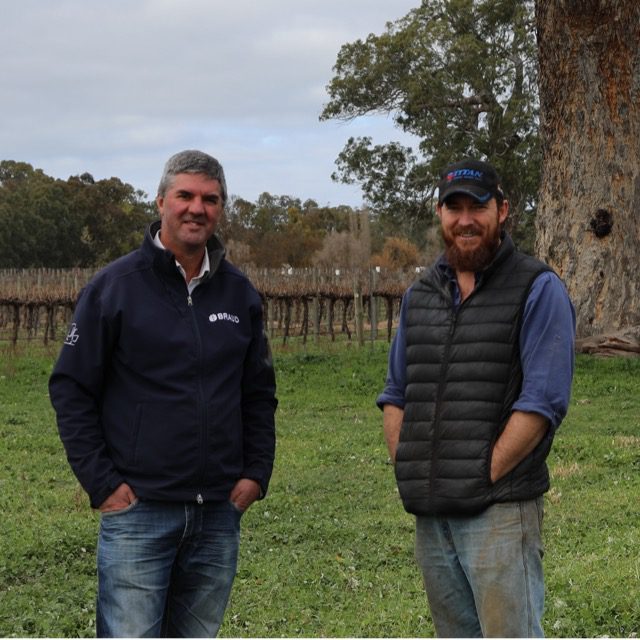1. Tell us about your experience in grape growing?
I have primarily had a career in wine and vines working for large wine companies. I grew up in the Riverland and attended Roseworthy for an Ag Degree with Horticulture/Viticulture as my final year. In 1988 I entered the wine industry and spent 3 years at Angoves, then 22 years with the Hardy Wine group and now 9 years with Casella. During this time, I have also developed 90 hectares of vineyards.
2. What prompted you to want to be involved in the EcoVineyards project?
Some of the goals of the EcoVineyards project resonated with things that I have been doing (and done) in my corporate role and my own vineyard. The project offered an opportunity and a template for a Biodiversity plan to bring everything together.
I have children concerned about climate change and the world that they are inheriting. They take an active interest in what I am doing to make a positive impact on ‘our’ little part of the world in order to make the world a better place.
3. What do you hope to achieve from your involvement in the EcoVineyards project?
I want to finish some of the projects we have already started, document our plan better and gather better information around the numbers and concentrations of the bioflora and fauna that may result from our activities.
I’m also looking forward to networking with other like minded people to see if there are even more opportunities to integrate into our whole farm enterprise and management plan. I acknowledge that there are still things I can do to reduce our chemical footprint but I’m still practical about implementing new initiatives given the commercial reality and inherent need to be financially viable.
4. Have you tried to increase biodiversity on your property before undertaking this project? If so, how?
We have protected remnant vegetation and worked to enhance these areas. We have also introduced sheep grazing during winter which has removed a whole herbicide pass and at least 2 whole slashing passes.
Inadvertently, the site’s frost susceptibility and subsequent inclusion of 6 frost fans has allowed us to leave every second row unmown during spring/early summer thus providing both a home and a food source for populations of bio flora and fauna…some of which I hope are beneficial!
By leaving every second row not mown it still permits some foot traffic and the higher grass provides a wind break for the one dedicated herbicide pass in late spring. When we do eventually mow as it dries off – this volume of ‘cover crop’ is then delivered undervine to provide a thick mulch smothering weeds and providing moisture conservation.
Our theory is that this then forces the benefits into the vine canopy and encourages the soil-based microflora and fauna to remain. It would be nice to have enough time to measure and prove our hypothesis, but the main thing is that it doesn’t appear to be not working!
5. Why do you think it is so important for growers to try and build natural resilience on their property?
My view is that I would like (if I can) to be softer on the environment. With some lateral thought and allowing myself the freedom to truly integrate enterprises that become symbiotic, add value and profit, I have demonstrated that there are opportunities to be softer on the environment in viticulture. This has kept grape growing interesting, challenging and satisfying for me.
Our successes are sometimes small. Some years ago, I participated in a beneficial mite trial predicated on removing or reducing some of the ‘insecticidal’ fungicides (for lower rates or complete replacement with alternatives) that resulted in a massive spike in the beneficial mite population. While the money saved did not eventuate as I required at least another fungicide cover, it did demonstrate that changing a management practice could promote an improvement.
In the time since I have somewhat wavered from this approach as the demands of my ‘real job’ and family have limited just how committed I can be, nevertheless, slow and steady does the trick. Our goal is to do each thing well rather than lots of things poorly. I am very thankful to my own vineyard manager (Joe) who does a great job of keeping the dream alive.
6. Looking to the future, what do you see as a new ‘normal’ for grape growers on their properties?
I would like to see the grape growing community stay vibrant and not be afraid to change. Somehow, we have to slow the thirst for more silver bullets, work more with nature rather than against, and begin to preserve biodiversity as best we can. Extinctions are not new, but I believe the alarming rate of them is limiting our ability to evolve safely.
READ THE CASE STUDY

